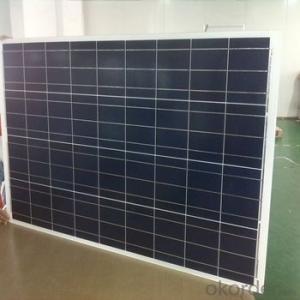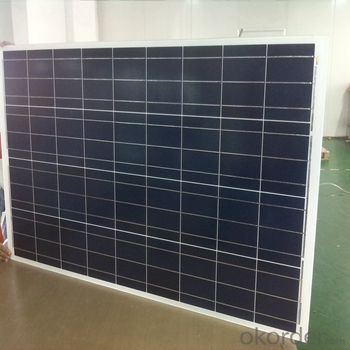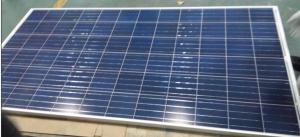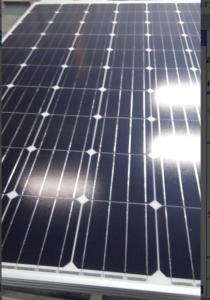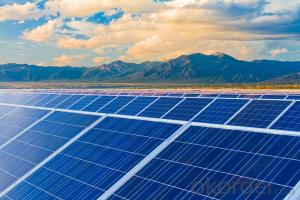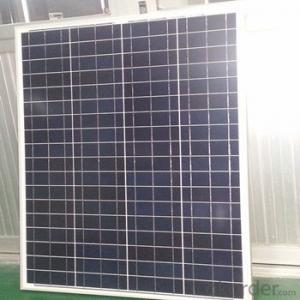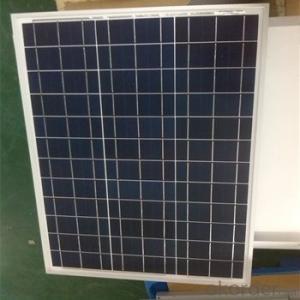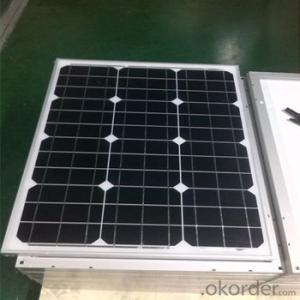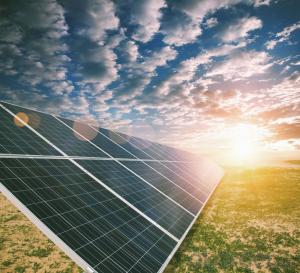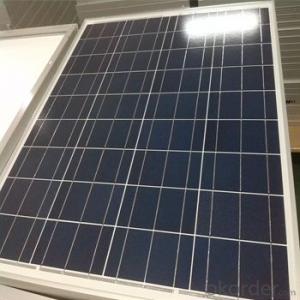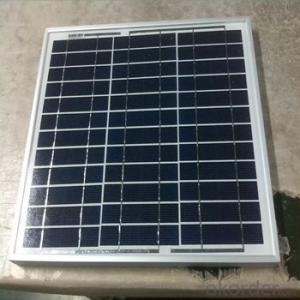Movable Polycrystalline Solar Module-120W CNBM Series
- Loading Port:
- Shanghai
- Payment Terms:
- TT OR LC
- Min Order Qty:
- 25 pc
- Supply Capability:
- 30000 pc/month
OKorder Service Pledge
OKorder Financial Service
You Might Also Like
Polycrystalline Solar Module-120w CNBM Series
High efficiency crystalline solar cell. Even if under the weak light, the solar module can produce maximum power output.
II Tempered glass (toughened glass): Anti-reflecting coating and high transmission rate glass increase the power output and mechanical strength of solar module.
III EVA and TPT: Using high quality EVA and TPT to prevent destroying and water.
IV AI frame: Without screw, rner connection. 6 holes on the frame can be installed easily.
V Junction box: Multi function junction box with water proof.
VI Long lifetime: ≥25 years; Less power decrease.
VII Good performance of preventing from atrocious weather such as wind and hails.
VIII Resisting moisture and etching effectively, not effected by geology.
IX The certificate issued by international authority: UL, TUV, IEC, CE.
Standard Test Conditions of Polycrystalline Silicon Solar Panel
The opto-electrical specifications shown below are stabilized values being measured at Standard Test Conditions, Irradiance: 1000W/m2, Spectrum: AM1.5 at 25°C, The info below is subject to manufacturing tolerances. Where appropriate minutes of measurement are available and are used for the dimensioning of the installation.
Advantages of Monocrystalline Silicon Solar Panel
• CNBM Solar performance guarantees for 25 years
• 12 years guarantee for workmanship
• Timeliness of delivery
• Quality Products certified (TÜV, UL, CE, ISO)
Specification
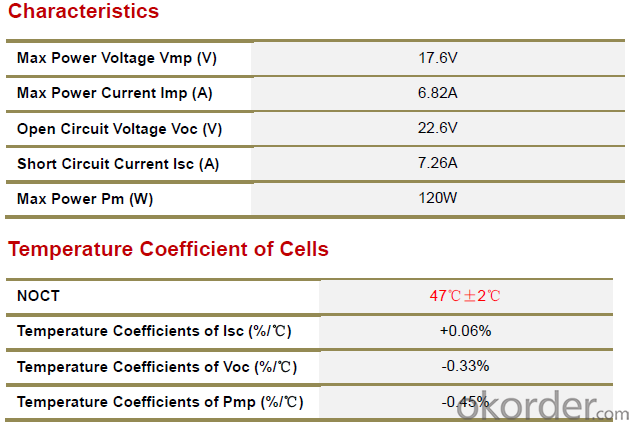

Certification
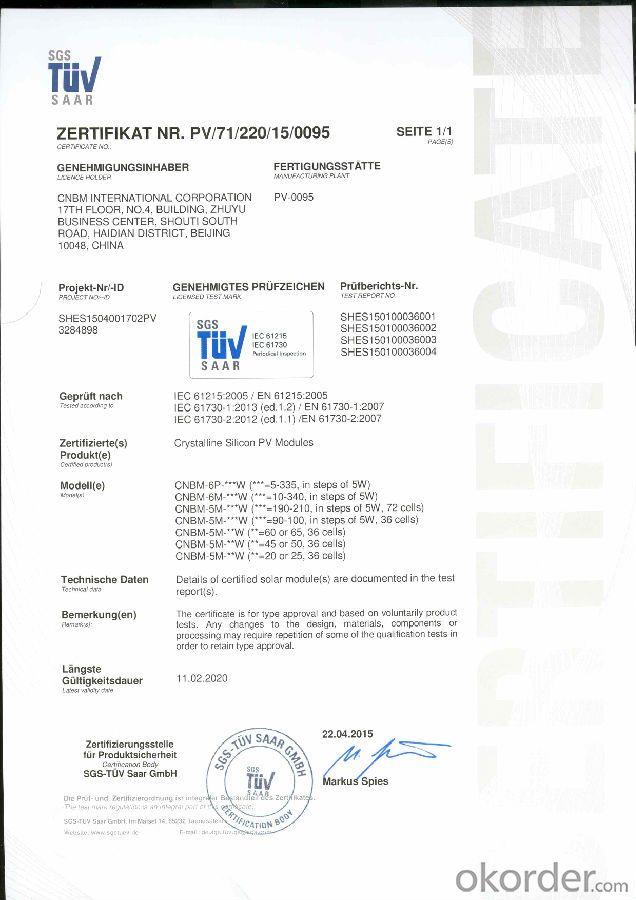
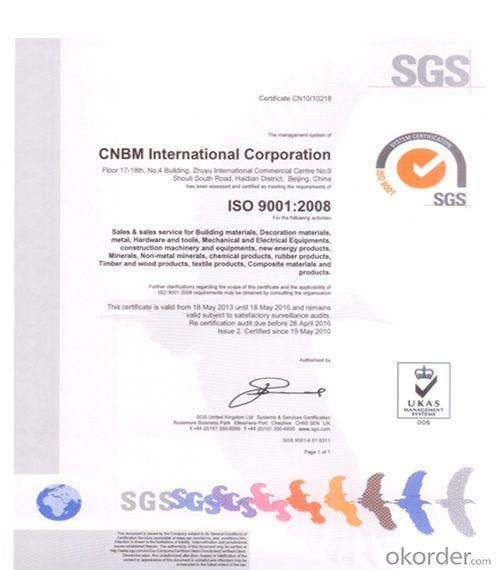
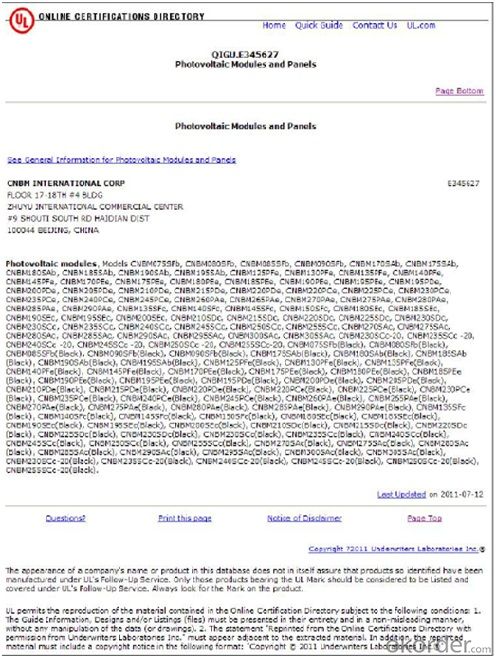
FAQ
We have organized several common questions for our clients,may help you sincerely:
①What price for each watt?
It depends on the quantity, delivery date and payment terms,
②What is your size for each module? Can you tell me the Parameter of your module?
We have different series of panels in different output, both c-Si and a-Si. Please take the specification sheet for your reference.
③Can you provide the peripheral products of the solar panels, such as the battery, controller, and inverter? If so, can you tell me how do they match each other?
Yes, we can, we have two companies for solar region, one is CNBM International, the other is CNBM engineering Co.
We can provide you not only the solar module but also the off grid solar system, we can also provide you service with on grid plant.
④What is your warranty system?
Our product performance guarantees for 25 years
• 12 years guarantee for workmanship
• Timeliness of delivery
• Quality Products certified (TÜV, UL, CE, ISO)
⑤How do you pack your products?
We have rich experience on how to pack the panels to make sure the safety on shipment when it arrives at the destination.
⑥ Can you do OEM for us?
Yes, we can.
⑦How long can we receive the product after purchase?
In the purchase of product within three working days, We will arrange the factory delivery as soon as possible. The pecific time of receiving is related to the state and position of customers.Commonly 7 to 10 working days can be served.
- Q: Can solar panels be used in areas with frequent thunderstorms?
- Yes, solar panels can be used in areas with frequent thunderstorms. While thunderstorms may temporarily reduce the efficiency of solar panels due to cloud cover and reduced sunlight, they do not pose any significant risk to the panels themselves. Properly installed solar panels are designed to withstand various weather conditions, including thunderstorms. Additionally, the energy produced by solar panels during sunny periods can still offset the electricity consumed during stormy periods, making them a viable option for areas prone to thunderstorms.
- Q: How much energy can solar panels generate?
- The amount of energy that solar panels can generate depends on various factors such as the size and efficiency of the panels, the amount of sunlight received, and the geographical location. On average, a residential solar panel system can generate between 10 to 20 kilowatt-hours (kWh) of electricity per day. However, larger commercial or utility-scale solar installations can generate significantly more energy, sometimes even in the megawatt range.
- Q: if I have a battery bank of of 6 L-6 Trojan batteries, 6V 390AH, wired in series parallel to give me 2V at 70AH (or 4,040WH) what kind of solar panels should I purchase assuming I have 8 hours of sunlight, a solar tracking system and I want to make sure I can fully recharge my batteries everyday if i use up all the power every night?i understand there are efficiency issues to consider which i have not calculated in yet. thanks.
- If okorder /... yet, it's worth browsing the off-grid section. 8 peak equivalent sun hours a day on average is very achievable with tracking, but are you sure you really want to spend on tracking? It's a lot of trouble and expense - might be cheaper just to get more panels. Also be aware that when you have a lead-acid battery bank capable of (say) 000 Ah, that is the capacity that the batteries could supply as a one-shot deal. If you ever took that much from them, they would be ruined. Typically, you would try to take only 20% of the capacity before recharging, although some batteries let you take 50%, with reduced life. Have you considered wiring the batteries as 36 volts? There would be more efficiency, and less problems with equalizing the batteries when charging. Unless 2 volts is really the output that you need most. Sorry to redirect you, but I can't recommend that forum too highly. Lots of considerations.
- Q: Can solar panels be installed on a library or educational institution?
- Yes, solar panels can be installed on a library or educational institution. In fact, many libraries and educational institutions are increasingly adopting solar energy systems to reduce their carbon footprint, lower energy costs, and promote renewable energy education. Installing solar panels on rooftops or open spaces of these buildings can provide clean and sustainable electricity, benefiting both the institution and the environment.
- Q: Can solar panels be installed on restaurants or hotels?
- Yes, solar panels can be installed on restaurants or hotels. In fact, many restaurants and hotels have been adopting solar energy as a sustainable and cost-effective solution to reduce their carbon footprint and electricity bills. Installing solar panels on rooftops or in parking lots can generate clean energy, helping these establishments become more environmentally friendly while also saving money on electricity expenses.
- Q: I'm making a model of a solar photovoltaic tower for a school project. I need a way to store energy, and we thought about using capacitors (mainly because of our somewhat limited funding). The tower will have a small photovoltaic panel (around the size of a laptop keyboard with number pad) and some (around 50) quot;heliostats(just the mirrors, no moving parts). What kind of capacitors should i use? and would a capacitor bank be better? i am getting confused with all those uF, pF and can't see the difference.Thanx in advance
- If you have a rechargeable AA battery (NiMH or NiCad) that might work. You're not going to get much power from that size array anyway, especially if it is not in full sunlight. A Farad (F) is ,000 times bigger than a milliFarad (mF), which is ,000 times bigger (stores ,000 times more) than a microfarad (mF). pF and nF are so tiny do not even look at them. With your size array voltage might not be a problem, but be sure to check that the voltage rating of the capacitor is less than whatever the array can make. Some people buy those solar yard lights, which seem to break often. You might be able to get some and use the contents for your project (pre-wired circuits).
- Q: Can solar panels be used for powering a wastewater treatment plant?
- Yes, solar panels can be used to power a wastewater treatment plant. Solar energy is a sustainable and renewable source of power that can be harnessed to generate electricity for various applications, including wastewater treatment. By installing solar panels, the plant can reduce its reliance on conventional electricity sources and lower its carbon footprint. However, the feasibility of using solar panels for powering a wastewater treatment plant may depend on factors such as the plant's energy requirements, available space for solar panel installation, and local climate conditions.
- Q: I want to install solar panels in my roof and most installers don't recommend any particular brand. Do you have experience with any particular brand that has worked for you or anybody you know? Does the brand of the panel make a difference?
- I didn't research this. I do know that you must install them on the side or area of the roof that receives the most Sun all day. You can get information at stores like Lowes or HomeDepot.
- Q: I have just made my first dolar panel 20 watts, charges my 27TMX Trojan battery perfectly. Now I am thinking to build more solar panels for a grid tie installation at my house, maybe 5 panels would do it, is this safe?
- Homemade okorder
- Q: Harbor Freight sells a 75 watt solar panel, a surge power inverter, and deep charge batteries. But no one there can tell me how to put it all together. I want the end output to be a simple power bar that I can plug my devices into. I live in an apartment so I can not wire it directly into the grid. Please only serious responses. Don't waste your time and mine.
- I don't have direct experience with the Harbor Freight panels, but have heard that they are agressively rated - i.e., the three 5-watt panels are really 5-watt panels. The 80-watt panel is likely to be a serious panel, rated according to standard test conditions. It will also be more durable, and probably have a warranty of 20 years or more. There's really no comparison. If your goal is to experiment with solar electricity, then get the kit from Harbor Freight (or Northern Tool, or any of a handful of other places). If your goal is to save money, generally you will need a larger scale than 80 watts - several thousand watts being the norm. And the payback time will be measured in years.
Send your message to us
Movable Polycrystalline Solar Module-120W CNBM Series
- Loading Port:
- Shanghai
- Payment Terms:
- TT OR LC
- Min Order Qty:
- 25 pc
- Supply Capability:
- 30000 pc/month
OKorder Service Pledge
OKorder Financial Service
Similar products
Hot products
Hot Searches
Related keywords
